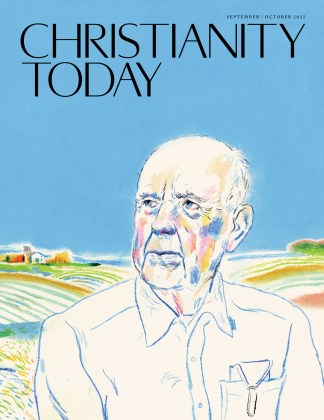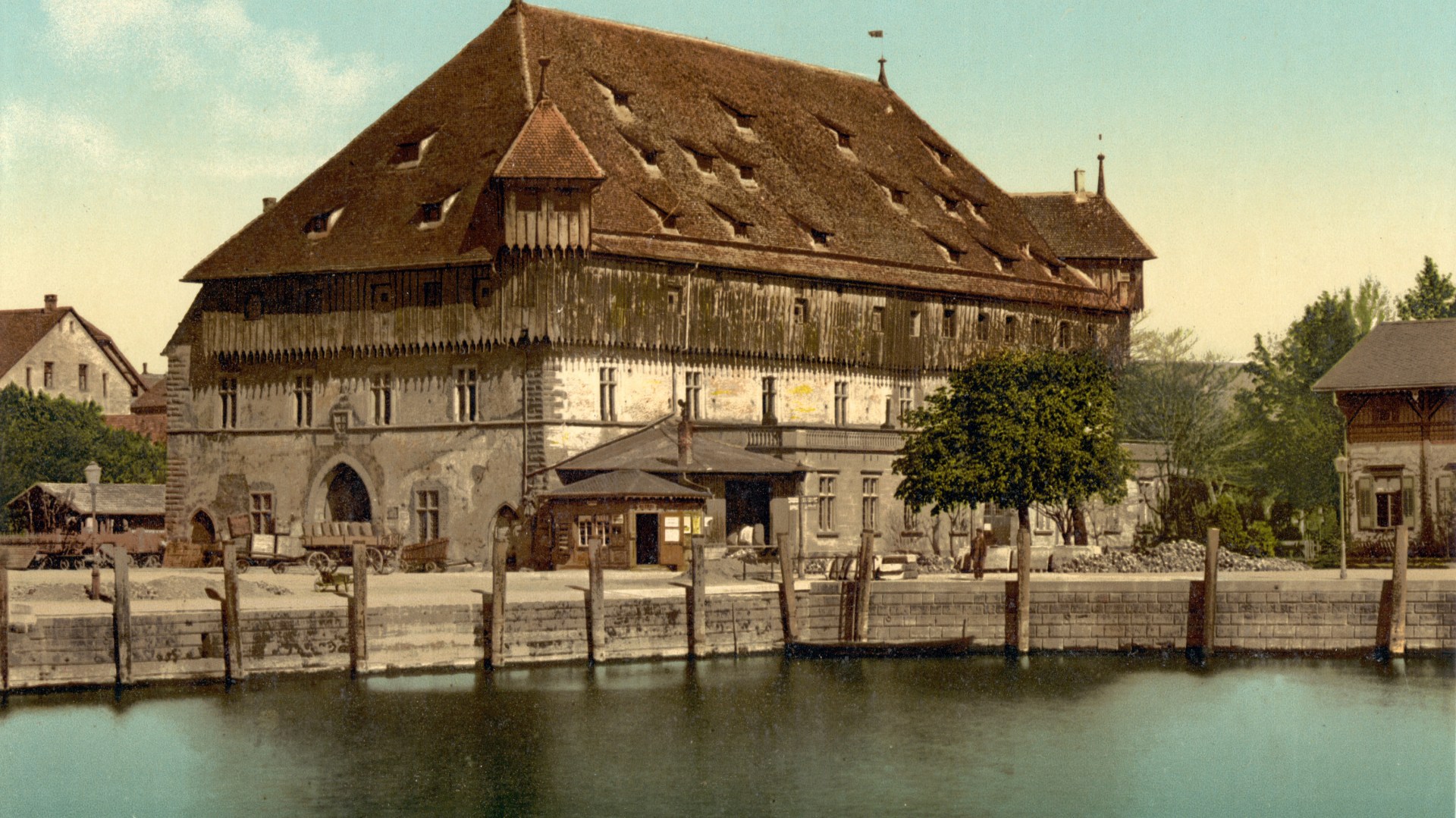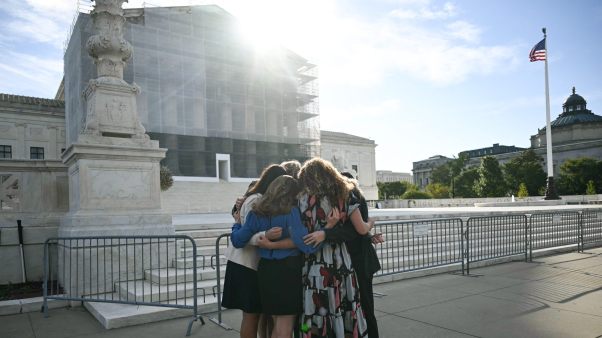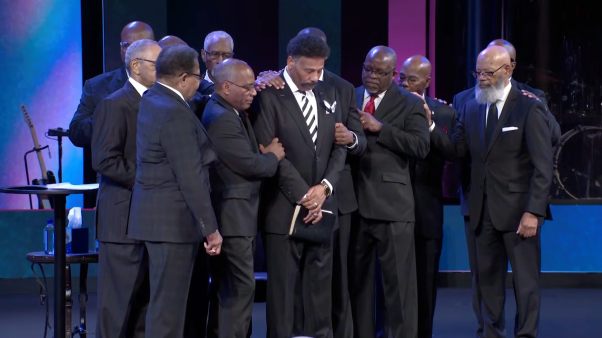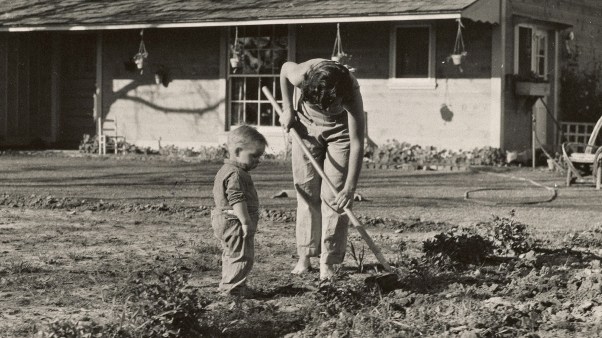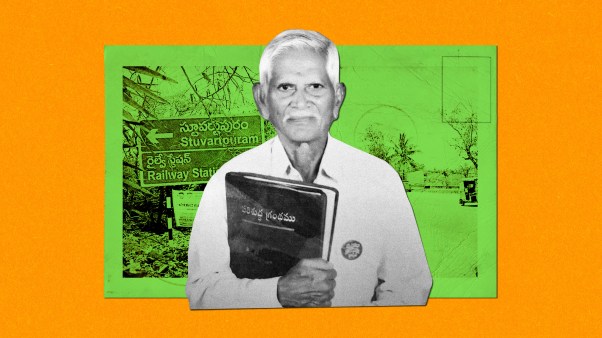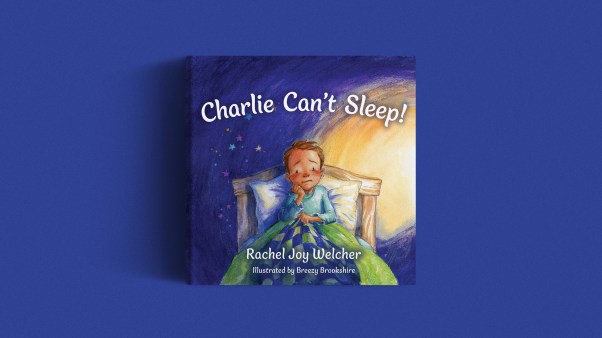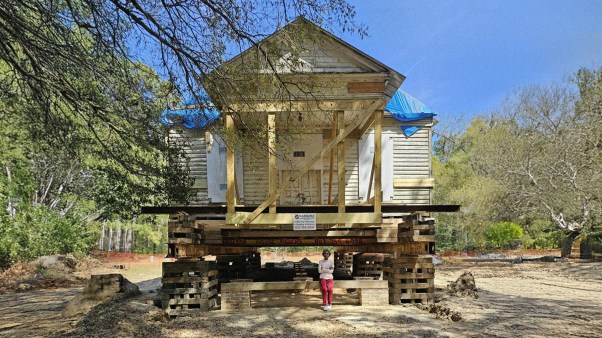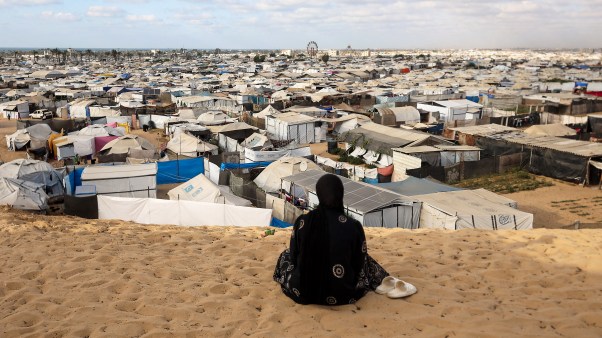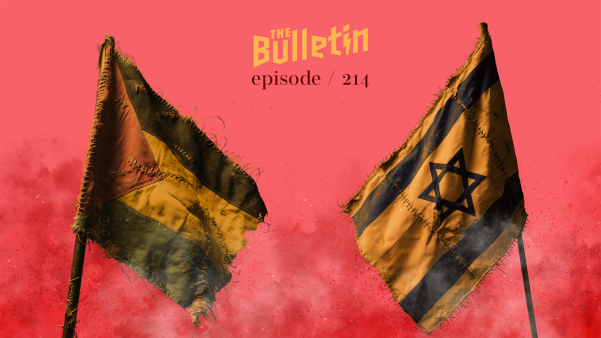“On Friday, St. George’s Eve, there was another session,” wrote an observer of the Council of Constance. “In this session Our Holy Father Pope Martin gave to all who were present at the Council of Constance permission to leave and likewise absolution from penalty and guilt. Afterward he gave the people his blessing in the upper court. Our lord King stood beside him, dressed as an evangelist, wearing his imperial crown and holding the orb in his hand while a man held a naked sword before him. Cardinal Conti proclaimed to the people in Latin the indulgence of seven years for mortal sins and seven Lents. Master Peter repeated it in German, and everyone was given permission to go home.”
This passage, from Ulrich Richental’s Chronicle of the Council of Constance, describes the closing session of that great council. The session took place on April 22, 1418, at a moment when the new pope, Martin V, with plague moving in on the city, was anxious to speed the council fathers on their way and make his own departure.
Constance may not exactly be a household word—not even in the history of representative assemblies—but in size alone it was one of the most imposing of medieval gatherings. Nor was it distinguished by size alone. It was the greatest and certainly the most memorable of the general assemblies held by the medieval Latin Church (i.e., the Western church). When it assembled in 1414, it did so at a time of supreme crisis in the life of that church, when what later came to be known as the Great Schism of the West had endured for almost forty years.
Causes of the Schism
In 1377, after the papacy had been resident for almost seventy years at Avignon, under the shadow of French royal power, Gregory XI had finally succeeded in bringing it back to Rome. He had done so despite the hostility of some of the Roman nobility and some of his own cardinals. When he died in March 1378, six of the twenty-two cardinals were still in residence at Avignon, where a considerable part of the papal bureaucracy was still functioning.
With Gregory XI’s death, the Romans feared the election of a French pope and the removal of the papacy back to Avignon. As a result, the papal election that took place in April did so amid considerable confusion—rioting outside the conclave and dissension within. It ended with the election of a compromise candidate, Urban VI (1378–1389), an Italian who had served at Avignon.
But Urban VI’s subsequent violent and abusive treatment of the cardinals caused them to fear for their lives and suspect him of insanity. That, combined with the turbulent conditions surrounding his election, gave rise to doubts about the validity of Urban Vl’s title. The cardinals publicly repudiated his election and selected one of themselves as Clement Vll (1378–1394). By the summer of 1379, having failed to capture Rome, Clement took up residence at Avignon, and the stage was set for two rival papal “obediences,” Roman and Avignonese.
As their previous political and diplomatic alignments might have suggested, France, Castile [a Spanish kingdom], and Scotland backed Clement. Meanwhile, England and much of the German Empire sided with Urban. As a result, neither of the rival claimants had a decisive edge of power. Neither pope being able to dislodge the other, and neither being willing to relinquish his claim, there began the most serious schism ever to disrupt the unity of the Latin Church.
Over time, loyalties hardened, and the rival papal courts strove to perpetuate their claims. At Rome, Boniface IX (in 1389), Innocent VII (in 1404), and Gregory XII (in 1406) were elected to succeed Urban VI. At Avignon, Benedict XIII was elected in 1394 to succeed Clement Vll. The understandable results were widespread administrative confusion and jurisdictional conflict, as well as a mounting and debilitating spiritual anxiety.
The Council of Constance
Many attempts were made to end the schism, yet the most promising had led only to the addition (at Pisa) in 1410 of yet another line of claimants to the papal title. The intolerable situation of three rival popes ultimately led, through a complex process of ecclesiastical and secular diplomacy, to the Council of Constance. Although the council was summoned (under imperial pressure) by the Pisan pope, John XXIII (1410–1415), in its determination to end the schism, it did not hesitate to depose him along with his Avignonese rival, Benedict XIII, and to accept the “resignation” of the Roman claimant, Gregory XII. The council then proceeded to elect a successor, Martin V (1417–31), the first pope in forty years to be able to command the allegiance of the whole Latin Church.
The achievement of the council was considerable. Not only did it end years of turbulence in the church, but it did so by asserting these historically significant beliefs:
• the pope, however divinely instituted his office, was not an absolute monarch but in some sense a constitutional ruler;
• the pope possessed a merely ministerial authority delegated to him by the community of the faithful and for the good of the whole church;
• the community of the faithful had not exhausted its inherent authority in the mere act of electing its ruler but had retained whatever residual power was necessary to prevent its own subversion or destruction;
• the community of the faithful could exercise power via its representatives assembled in a general council—even, in certain critical cases, against the wishes of the pope and, if need be, it could judge, chastise, and even depose a pope.
The Great Schism of the West thus set forth a greatly expanded authority for general councils of the church. As the miseries of the schism receded into the background, however, a resurgent papacy succeeded in marginalizing this “conciliar” consciousness in the life of the church. But a strengthened role for councils never wholly disappeared, and, in the wake of the Second Vatican Council (1962–1965), it has shown unambiguous signs of renewed vitality.
Dr. Francis Oakley is president of Williams College in Williamstown, Massachusetts.
Copyright © 1990 by the author or Christianity Today/Christian History magazine. Click here for reprint information on Christian History.
